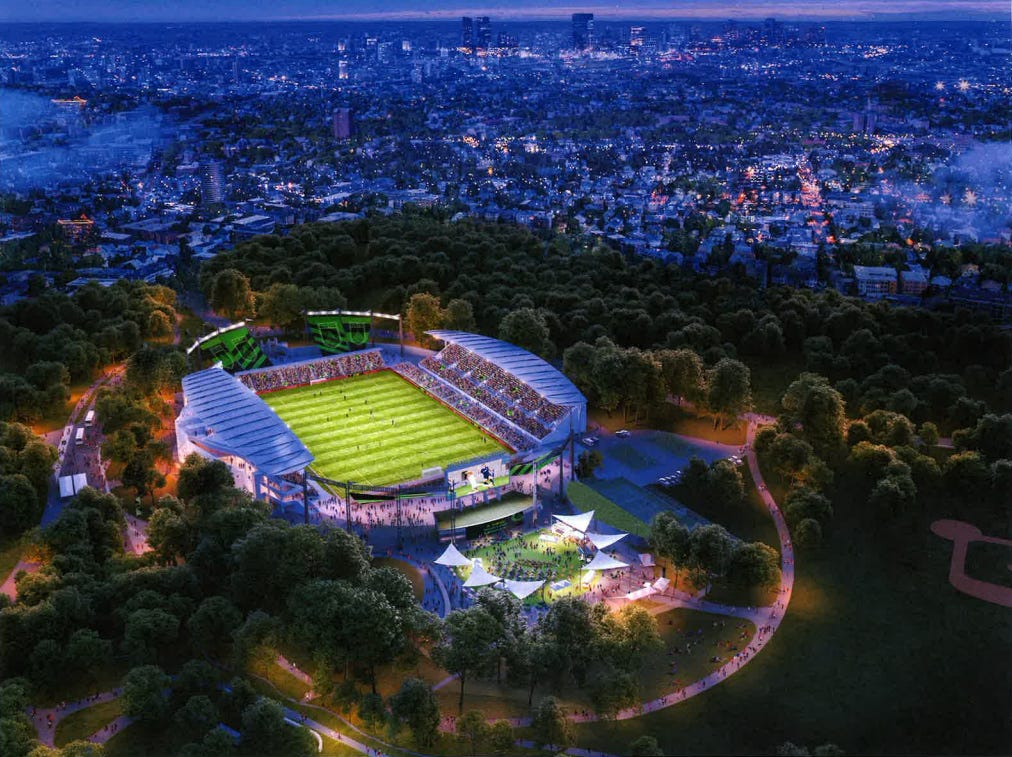White Stadium Lawsuit Trial Day 2 Recap
Day two of the White Stadium trial proceedings started off with a last-minute move by the plaintiffs that left the city and Boston Unity Soccer Partners’ (BUSP) attorneys with little time to confer.
Day two of the White Stadium trial proceedings started off with a last-minute move by the plaintiffs that left the city and Boston Unity Soccer Partners’ (BUSP) attorneys with little time to confer.
For the first matter of the day, attorneys representing the Emerald Necklace Conservancy and 20 Boston residents filed a motion to add two claims to their case without introducing new evidence. Despite objection from the defendants’ counsel, Superior Court Justice Matthew Nestor allowed the motion.
Alan Lipkind, an attorney for the plaintiffs, referenced two Massachusetts laws that allow groups of at least 10 taxpayers to petition against:
Building structures exceeding 600 square feet in area in a public park
Towns or school districts raising or spending money or entering binding agreements for purposes that it does not have the legal right to do
Gary Ronan, the City of Boston’s attorney, briefly contested both claims, calling them futile. Ronan cited statutes from 1947 and 1950 as evidence that the court gave permission to build White Stadium and deemed it a “school building and yard,” respectively.
“What we’re doing here is renovating the existing stadium,” he said.
Since the city is only paying for its portion of the renovation, there is no illegal appropriation, he continued.
“There’s nothing illegal about the City of Boston spending city money to build a school building,” Ronan said.
In addition to the two new claims, the judge will also have to decide whether the White Stadium parcel is considered parkland and is subject to Article 97 of the Massachusetts Constitution. The act is designed to preserve open space and prevent parkland from being privatized. Public parkland subject to Article 97 would require a two-thirds vote of the state legislature before it could be used for other purposes.
The city called on three witnesses during the proceedings. Diana Fernandez Bibeau, chief of urban design at the Boston Planning Department, listed community benefits that would be a result of the city’s partnership with BUSP. She noted youth scholarship and mentorship programs, commitments to supplier diversity, job creation, and a $500,000 community benefit fund. The team also committed to managing stadium operations, which the city estimated would cost $1.5 million to $2 million a year.
Avery Esdaile, senior director of athletics for Boston Public Schools (BPS), also testified. Esdaile described the state of White Stadium before demolition began.
Apart from the “unusable” east grandstand and “unwelcoming” spaces in the west grandstand, he said the track has holes and the field rises up in the middle and often floods after it rains. The state of the track and field made it difficult to host practices or games for different sports.
Esdaile explained the renovation would provide new facilities, such as a sports medicine room and strength and conditioning space, that BPS students do not currently have access to, as well as expand amenities and stadium access time for the general public. Community events that were previously held at the stadium will still be able to take place there after the renovation, he confirmed.
Boston Park Department's chief landscape architect and interim commissioner, Liza Meyer, was the final witness to testify. Lipkind and Ronan asked Meyer about Article 97 information that has been highly contested by the two parties.
The city’s park department publishes an open space and recreation plan (OSRP) every seven years in order to meet requirements to receive state grants. The plan contains a property inventory of open spaces in Boston along with different data points including whether the spaces are protected by Article 97. Current and previous OSRPs label White Stadium as being subject to Article 97.
The inventory comes with a note that the data “may not be appropriate or sufficient for legal… purposes” and refers to the Registry of Deeds and property surveys for more reliable data.
Upon seeing the designations, Meyer looked through the stadium’s property files, which included documents from several decades ago, that excluded the parcel from Article 97 protection. She also viewed other records associated with the purchase of the property, as well as the transfer of care, custody, and control of the stadium to BPS.
Lipkind’s line of questioning for Meyer acknowledged the different city fields and stadiums that are considered protected parkland, including East Boston Memorial Park and Clemente Field in the Back Bay Fens.
Both Meyer and Fernandez spoke about how much the project has changed since the original plan was published. The two described how concerns and feedback from the community and their own city departments shaped the current design to be less disruptive to the adjacent parkland. This included amending traffic plans and removing proposed features that would affect views from other park areas among other remedies.
The judge expects to hear closing arguments on Thursday if the defendants do not introduce new evidence.



